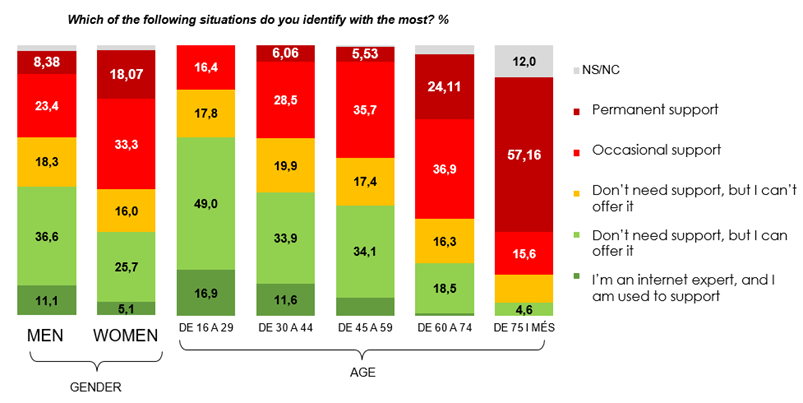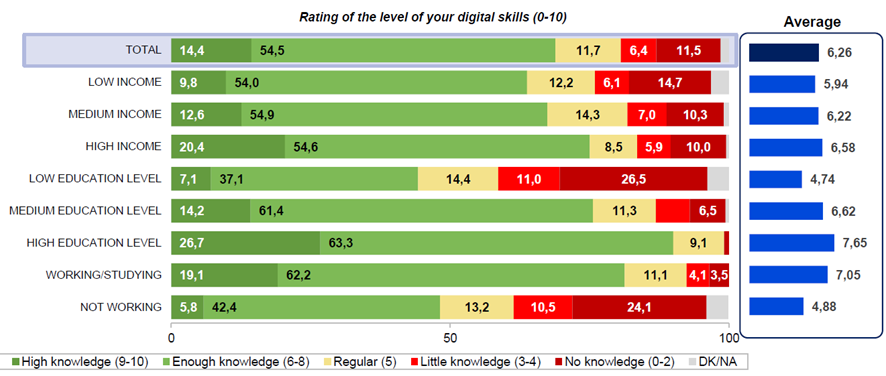INTERESTING RESULTS
In all this gender consideration there is a silver lining coming from a small testing action from Mollet del Vallès. This consisted of a survey run in the city of Mollet which captured interesting disaggregated data about gender, literacy and use of digital technologies. The survey was run by phone to 600 citizens over the age of 16 with a level of confidence of 95.5% and a sampling error of 3.97%.
Despite the fact that both male and female respondents reported similar skills and knowledge, the survey showed men typically feel more confident than women in solving digital problems.

Mollet del Valles IAP plans for the role of the digital facilitator which will have an impact over citizens who struggle to use and benefit from digital procedures. This digital facilitator will be located in public facilities such as Community Centers helping people who needs support at local and national level as well as any other electronic procedure beyond public administrations. The goal is for citizens to become self-sufficient users and having available support if needed while combating the gender gap, since women will benefit more than men.
The picture below shows a significant drop in the digital use for both men and women over the age of 60.

However, whilst gender is a key factor, lower income, lower education level and unemployment are actually more likely to be a larger factor in the level of digital skills: Education and job status are the most significant drivers, because many uneducated people are also unemployed. This emphasises that training is an optimal solution to fight against digital exclusion. In this case, gender is relevant, but less of a key factor to consider compared to the socioeconomic factors.

The survey also highlighted that women benefit different than men from using internet. While men clearly use it for work related issues, women tend to use it for learning and socialising as well. However, it is important to notice that removing 60+ years’ women balances this results and shows both genders below 60 years use digital more for work, learning and socialising.
The same goes for confidence in the use of digital tools and tasks which is higher on men than it is on women and demonstrates the gender inequality in terms of the outcomes achieved from using digital services. These results might not bring big findings to the topic but it sets the first stone to build the knowledge on the matter at local level and set indicators to monitor the future evolution of the exclusion.

![]()
CONCLUSIONS
The gender equality session by Dr. Mary highlighted that most project partners consider gender relevant for their action plans. The evidence resulting from the survey in Mollet del Vallès highlights gender as a critical aspect of the digital divide but it is paramount to combine it with other variables like age because the results change enormously when combined. Considering intersectionality is crucial when looking at the data.
Even though every partner has different situations and demographic particularities in their region, they are now more conscious about moving public policy design in the right direction to eliminate these systemic inequalities.
